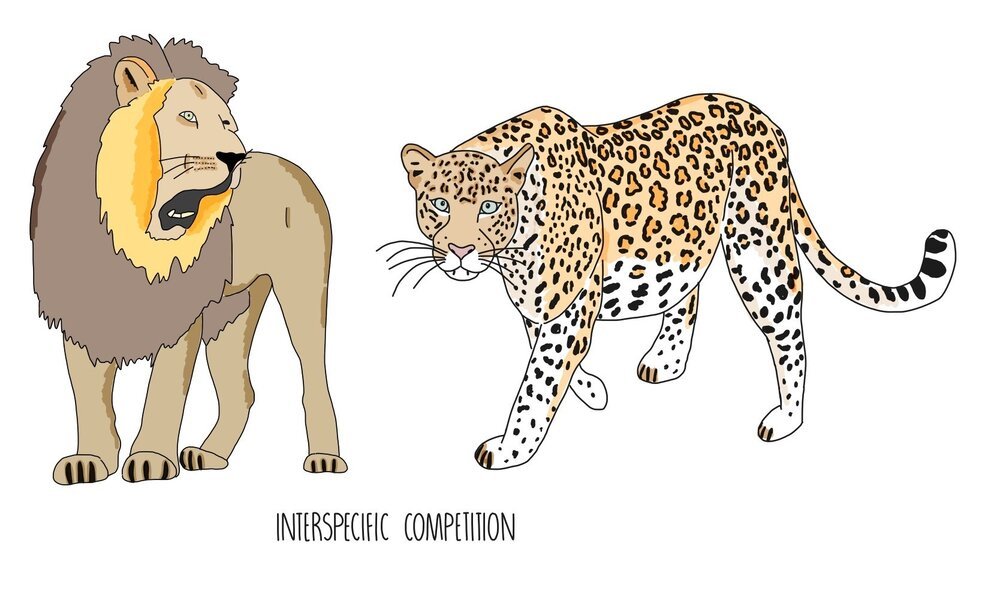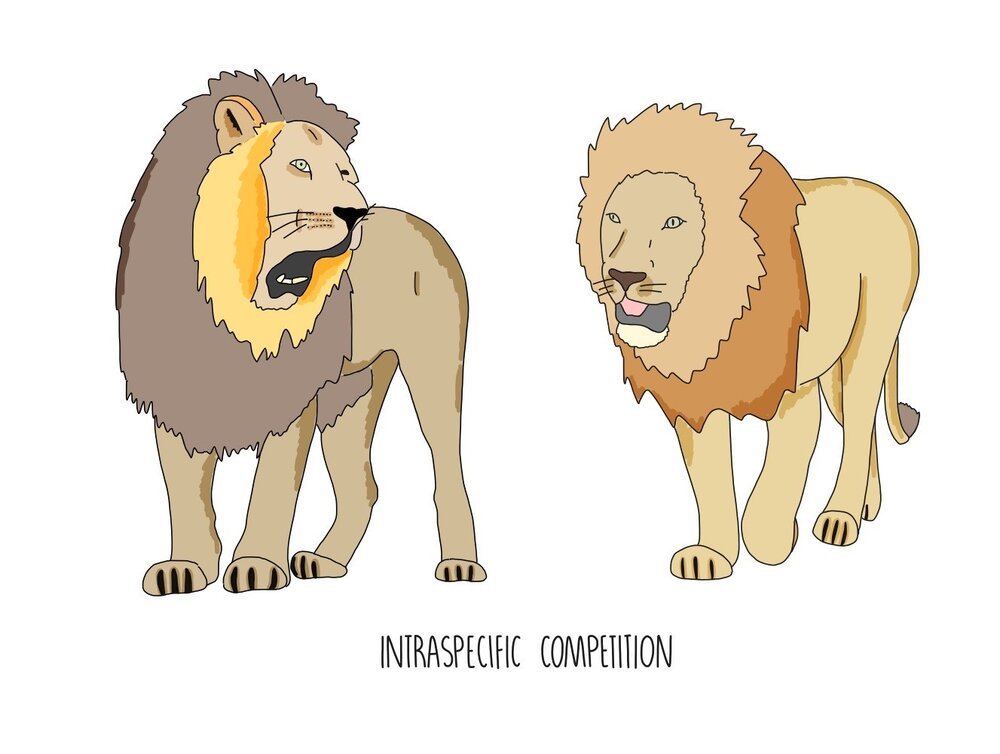Populations and Sustainability
Factors which affect population size
The abundance (or population size) is defined as the number of individuals of one species in a particular area. It depends on both abiotic (non-living) and biotic (living) factors.
Abiotic factors, such as light intensity and water availability, affect population size because when these conditions are ideal then organisms can grow and reproduce successfully. When these conditions fluctuate (e.g. if the temperature is too cold), the organisms in that habitat cannot grow as efficiently. More energy will be spent maintaining body temperature which means less energy will be available for growth and reproduction.
Biotic factors also affect species abundance. These include interspecific competition, intraspecific competition and predation.
Interspecific competition describes competition for the same resources between different species. Interspecific competition means that resources have to be shared between the different species so there will be less available to both. This means both species will have less energy for growth and reproduction, so population numbers of both species will decrease. For example, leopards and lions show interspecific competition since they both feed on the same prey.
Intraspecific competition describes competition for the same resources between the same species. When resources are abundant, the population size increases. This increases intraspecific competition since resources will need to be shared between more organisms, which cause population size to decrease. This pattern causes population numbers to fluctuate around the carrying capacity (the maximum number of organisms that an ecosystem can support).
Predation affects the abundance of the prey species and vice versa. Whenever the population size of prey increases, this causes the population size of the predator species to increase because more food is available. The increase in the predator population causes a decrease in the prey population because there are more predators to feed on the prey. This causes a drop in the prey population size, which reduces the food availability for the predators, which in turn leads to a reduction in the predator population.
Population sizes tend to fluctuate around a certain level, called the carrying capacity. The carrying capacity is the maximum stable population size that an ecosystem can support. It varies in response to abiotic factors (e.g. water availability) and biotic factors (competition and predation).
Conservation
Conservation aims to manage ecosystems by allowing a sustainable use of resources (i.e. replacing the natural resources so that they are still available for future generations). In contrast, preservation is simply the protection of ecosystems. The habitat completely left alone, and nothing is taken out. There are economic, social and ethical reasons for conserving habitats:
Economic – areas of natural beauty attract tourists, which bring money to the region. Areas of high biodiversity provide resources including drugs, food and building materials.
Social – biodiverse areas look good, and are important for our mental health
Ethical – we have a moral responsibility to ensure that other species don’t become extinct, as they have as much right to survive as we do.
There is often a conflict between conservation and human needs. For example, endangered animals may encroach on farmland and hunt local livestock. This poses an economic problem for the farmers, who may be tempted to retaliate by killing the animals. In such areas, conservationists may work with the local people to explain the importance of conservation, while helping to reduce conflict between their need to make a living and preserving biodiversity.
Conserving woodlands
A coppiced alder after one year of regrowth. Credit: Cat James (Wikipedia).
Conservation of a woodland ecosystem can take place in different ways:
Selective felling – removing the largest trees (as well as diseased ones) to help more immature trees to grow. The felled trees are replaced with seeds.
Coppicing – trees are cut close to the ground to encourage new growth. Since the stumps have good root systems, they can grow back more quickly than replanting young trees.
Pollarding – a type of coppicing where the trees are cut higher up. This is to prevent deer from eating the new shoots. Growing saplings in plastic tubes also prevents grazing by deer and other large mammals.
Clearing trees in strips or patches – woodlands recover faster if they are surrounded by areas of established woodland, compared to larger, open areas.
Planting native trees – native trees are better for biodiversity than non-native trees because they have established interactions with other organisms in the ecosystem.
Planting trees with plenty of space – to prevent competition and allow maximal growth.
Bycatch from a shrimp boat. Credit: Steven Fruitsmaak (Wikipedia)
Conserving marine life
So far, most fishing has been carried out unsustainably – we are catching and killing more fish without giving populations the chance to replenish themselves. Sustainable fishing could take place in the following ways:
Fishing quotas – to limit the amount of fish that fishermen are allowed to catch.
Controlling mesh size – nets with a small mesh increases the amount of by-catch (the unwanted fish that are accidentally caught). Using nets with bigger holes will allow small by-catch and young fish that are too small to sell to slip out of the net.




